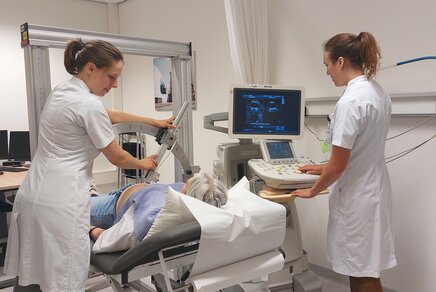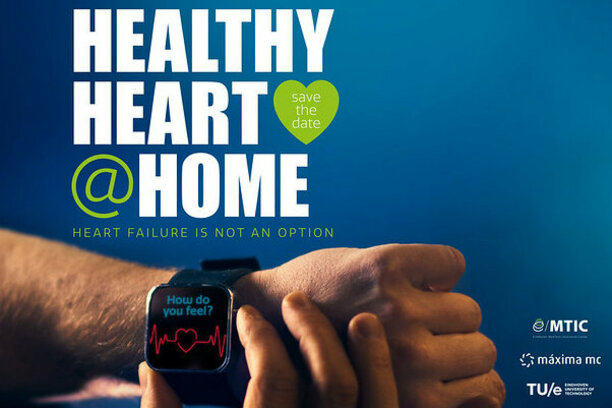Keeping track: doctor monitors your heart at home
On January 8, professor and cardiologist Hareld Kemps will hold his oration within the Department of Industrial Design.

To improve supervision of patients with chronic heart failure, Hareld Kemps, a cardiologist specializing in sports, took inspiration from the professional soccer players and cyclists that come see him. He worked on the implementation of a special heart watch, allowing him to home-monitor his patients. This doesn’t only create a wealth of medical data, but also better insight into personal lifestyle. On Thursday, February 8, the development of this new care pathway will be the focus of the TU/e symposium Healthy Heart @ Home, which will be followed by the inauguration of the new Professor of Remote Patient Management in Chronic Cardiac Care at the Department of Industrial Design.
A person over eighty with chronic heart failure and a young soccer player. At first sight, these two people couldn’t be more different. But, says cardiologist Hareld Kemps, they actually have a lot in common.
“The eighty-something-year-old is also doing top-level sports. With a badly functioning heart, getting dressed in the morning takes the same amount of energy as an endurance training session for a professional athlete. And after this effort, the day’s just getting started.”
By looking at heart patients from another perspective and combining his knowledge of both groups, cardiologist and newly appointed Industrial Design Professor Hareld Kemps is working on the development of a new care pathway. “We pay more attention to the person as a whole now, rather than focusing exclusively on the clinical picture.”
Optimizing everything
Due to their limited exercise capacity, older patients with chronic heart failure are often confined to their homes and have minimum exercise. Which is detrimental to their everyday functioning, which gets progressively worse. To break this pattern, Kemps calls for detailed custom supervision, similar to what top athletes get.
“For a professional soccer player or cyclist, you need to optimize everything. Sleep, nutrition, relaxation… you try to find the right balance both in physical and psychological terms. But an eighty-something-year-old with chronic heart failure also benefits from such a multidisciplinary approach.”
This is why Kemps and his colleagues looked for options for monitoring patients in their daily lives. The COVID pandemic actually worked to their advantage in this respect, Kemps tells us.
“When the hospitals ‘closed’, this had a huge impact on regular healthcare. Suddenly, all we had to supervise our patients were video communication and chat. And we saw it worked great. A semi-annual consultation is only a snapshot; by seeing the patient in their home we found out so much more.”
Bag full of measuring instruments
This is why Máxima Medical Center, as one of the first hospitals in the Netherlands, has been sending its patients home with a bag of measuring instruments over the past years.
“These may include scales, a blood-pressure monitor, a thermometer, and an oximeter. By getting regular data, we develop a much better overview of the client. And that benefits the patient’s well-being and treatment, as well as the care economy. Home monitoring is still in its infancy, but the field is definitely on the move.”
Through the continued development of sensors, such as a heart watch that can monitor patients with chronic heart failure from a distance, Kemps’s research group actively contributes to this progress. Physician-researchers and engineers work together in the group, which Kemps says leads to successful cross-fertilization.
“Technology is crucial if you want to monitor patients at home, for one thing in the development of the right sensors and equipment. We saw, for instance, that a normal ‘Fitbit’ doesn’t function well in heart patients who take certain medications, and that it also needed some adjustment in elderly people with thinner arms and skin.”
“But we also research what parameters you need exactly to monitor a specific patient group, and how you can extract useful information from the heap of data coming in 24/7. The psychological side is at least as important: how do people use medical technology in their home situations?”
“In what way do we motivate patients to change their lifestyles? This requires an adjustment from us as doctors as well, moving away from ‘prescribing pills’ to personalized treatments that ensure someone can function optimally. After all, as a patient, you’re more than your disease.”
More on Health



Latest news


![[Translate to English:] [Translate to English:]](https://assets.w3.tue.nl/w/fileadmin/_processed_/e/0/csm_BvOF%202019_1031_BHF%20license%20TUe%20ILI%20copy_8a50884392.jpg)
